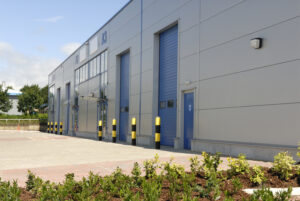Rising interest rates and the collapse of Silicon Valley banks and other financial institutions led many banks to tighten loan standards. The resulting credit crunch hit the commercial real estate market hard, as is evidenced by the fact that Q3 2023 commercial loan closings in the United States are down a whopping 48% from Q3 2022. However, James Millon, the U.S. president of Debt & Structured Finance for CBRE, sees cause for cautious optimism. “Credit is gradually loosening,” he notes. Millon explains that “lending conditions may be stabilizing for certain assets” while noting that the FED could be at the end of its rate-hiking campaign. Its decision earlier this month to hold interest rates steady would appear to be an indicator that hikes could be at an end.
Millon isn’t the only expert predicting the end of the FED’s rate hikes. Leading European bank UBS recently stated that it expects the FED to not only stop rate hikes but actually slash rates by a whopping 275 basis points by mid-2024. The prediction is based on an accompanying prediction that the United States will fall into a recession at some point in the coming year. The CME FedWatch Tool also predicts rate hikes but doesn’t believe they’ll start before mid-2024. While the FED has yet to reach its goal of lowering inflation to 2%, it’s getting close. As of October 2023, the inflation rate is 3.24, far lower than January’s 6.4 inflation rate. An end of rate hikes would take pressure off banks sitting on unrealized losses caused by higher bond prices; thus, banks would not have to risk selling bonds at a loss in the event of a bank run. While banks aren’t the only commercial real estate lenders, they accounted for close to 50% of all commercial real estate loans in Q3 2022 but only provided 38.4% of commercial real estate loans in Q3 2023. Their decision to tighten loans has had an outsize impact on the commercial real estate market; any move to loosen standards could spur the market forward and provide a boon to investors throughout the nation.
On the other hand, investors should bear in mind that the lending market may take longer to stabilize than anticipated. Some analysts are predicting that the FED won’t lower rates until 2025. What’s more, if the economy experiences a “soft landing” rather than the recession many have been expecting, the central bank would face little pressure to drastically slash rates to keep the economy afloat. At the same time, private lenders could face a liquidity crisis due to rising commercial default rates. As commercial real estate loans mature, many investors are unable to make needed payments and cannot refinance their loans due to tightened lending standards and the increased cost of borrowing money. Private lenders would then be forced to take possession of these properties at a time when property values are already low, especially for unoccupied office buildings. Selling these properties at a loss compounds the pain for banks as low-cost sales lower property values for other, similar properties in the area. As loans from private lenders currently account for well over one-quarter of all commercial real estate loans, their impact on the commercial real estate market should not be underestimated.
Lending standards for certain types of commercial real estate are starting to stabilize. Stats from the third quarter of this year show that loans for retail and industrial properties performed better than other loan types. Demand for these properties exceeds supply, which means that property values could rise for the foreseeable future. Increased property values coupled with an increase in commercial real estate investment would not only be good for the economy but could also help to boost property values. This would benefit banks and other lenders that would need to take possession of properties with delinquent loans as they would be able to sell properties at a reasonable price. However, the commercial real estate market is still reeling from reduced access to credit, a rise in CRE loan delinquencies, and high interest rates. Without relief from the FED, new loan originations could continue decreasing, putting pressure not just on investors but also on lenders who need to sell commercial properties that are steadily dropping in value. Investors will want to approach the new year with the understanding that the CRE market is showing signs of stabilizing but has a way to go to achieve full stabilization.
Have questions?
Peak Commercial is committed to providing you with the latest and most up-to-date information affecting you and your commercial real estate investment portfolio. Contact one of our expert commercial real estate brokers or team members today to learn more.
(818) 836-6717



